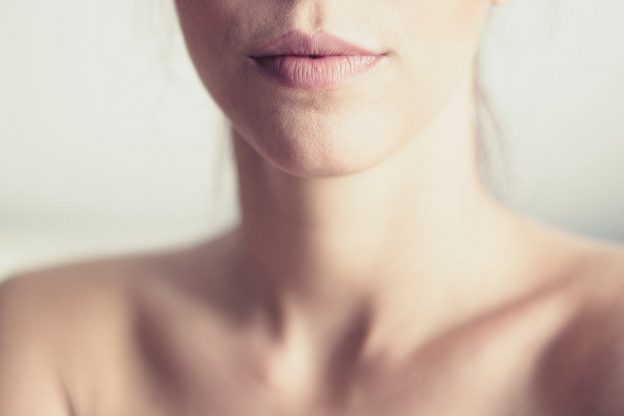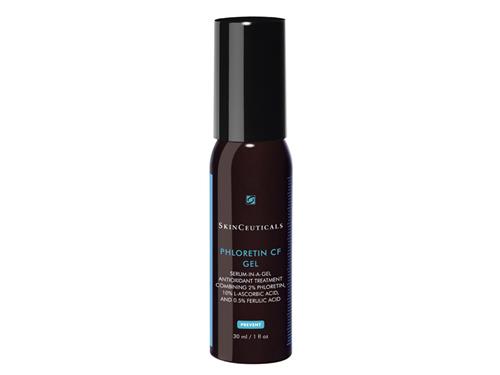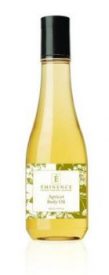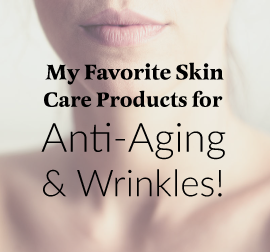Neck and Chest Issues – Neck Lines, Brown Spots, Chest Wrinkles
Protecting chest and neck skin
Your face isn’t the only area that needs protection. The skin on the neck and chest gets almost as much sun and weather as the face, and yet it is thinner. Aging and sun exposure can result in chest and neck lines and wrinkles, redness or blotchiness, and brown spots. Our resources section has articles on sunscreens, repair creams, antioxidants, and vitamin-based products for protecting chest and neck skin. They prevent damage and are dermatologist recommended.
The best performing skin care products for neck issues that we’ve tested
At my clinic, we’ve worked with thousands of patients on treatment plans for their necks. But a great skin care routine is equally important to maintain great skin, prevent further damage, and help treat wrinkles and sun damage on the neck. We only carry products that we’ve tested and found to truly work. Here are some that I personally use and love, and that our patients have found great results from.
1. An Antioxidant cream: Revision’s Nectifirm Advanced
This is one of the best performing neck creams we’ve tested and is popular with our patients. It improves the fine lines and some of the laxity (sagging), if it’s mild. If you have a LOT of loose skin, this will help with texture, but not the sagging. See my full review here.
2. A brightening and “redefining” treatment for creping, photodamaged skin: Skinceuticals’ Neck, Chest and Hand Repair
Finally a good product for the neck, chest and hands. Does help to improve color, reducing appearance of age spots. It also improves the appearance of your neck texture overall. But don’t expect change in those deeper wrinkles or raised brown spots, you’ll need your dermatologist for those. See my full review of the product here.
3. A great neck sunscreen: Image’s Prevention + Daily Moisturizer SPF 30
This is for anyone trying to prevent sun damage, skin cancers, brown spots, and protect skin cell DNA. One of the best sunscreens for melasma due to it’s zinc 18%. This is great for normal to dry skin. If you want a zinc 18% sunscreen with a tint, look at the Dermaquest 30 tinted. See my full review here.

Skin on the face, neck, and chest don’t match
I started sunscreening my face in my mid-20s, but it took me several years to realize that my neck and chest were getting almost as much sun as my face. Yet I was leaving my neck and chest completely unprotected!
Some of you may have been doing the same thing for longer, in which case you may be noticing a mismatch between the skin on your face and the skin on your neck and chest. The problem may be your skin is brown and blotchy, red and blotchy or both.
Creams will only go so far in the neck and chest if the sun damage to skin is bad. If creams cannot help, you may need laser treatments. Remember, if you make the investment in laser treatments, be sure to use sunscreens, antioxidants, and laser treatments once a year to maintain that investment.
Brown spots from age and sun damage
Brown skin spots are essentially sun damage. You may have had them as freckles when you were younger, but they get larger and often darker as you get older. Be sure to have a dermatologist examine your skin before any cosmetic treatments are performed to make sure you don’t have a skin cancer.
The first thing to do about brown spots and sun spots on skin is to prevent more of them by sunscreening. Make sure you use a sunscreen that protects you from UVA radiation by having at least 5-10% zinc or titanium or 3% mexoryl.
You can also try over-the-counter “bleaching” creams if your age spots are localized or not too bad. “Bleaching” creams don’t really bleach, rather they temporarily decrease the production of brown pigment in your skin. Drugstore skin bleaching lotion contains 2% hydroquinone and are not very effective. They will cost under $50 and can be found at your drugstore.
Bear in mind that continued sun exposure will stimulate the growth of brown spots, so that the bleaching creams will not protect you against the regrowth of brown spots or the development of new ones. Only sunscreen can do that. Remember, protecting chest and neck skin is your first priority to avoid more issues arising.
Prescription bleaching creams all contain 4% hydroquinone plus or minus other ingredients like hydroxy acids, sunscreens, or tretinoin. These are more effective but still temporary. For some patients who are allergic or don’t want to use a hydroquinone cream, I have also used plant-based bleaching creams. These ingredients are ones like arbutin, thymol, and kojic acid. They seem to be less effective than the prescription creams.
Microdermabrasion and light peels are also options for mild to moderate brown spots. A good aesthetician can perform microdermabrasion or a low-strength peel, and these can often give good results but need to be done in a series, usually to 3-6 treatments, to be effective. Costs vary widely but a series might run $250-$800 depending on how many are done and what is used.
A medium peel, like a TCA peel, can also give good to excellent results but should be done by an experienced dermatologist
The most effective treatment option for brown spots is a series of laser treatment. Lasers for brown spots are also, unfortunately, the most expensive.
An IPL laser (also called photorejuvenation) usually gives excellent results. A series of five treatments will cost you anywhere from $1,500 to $2,500, but often an IPL will also reduce redness, stimulate mild collagen growth, and add to your skin’s glow. You will need maintenance treatments when brown spots reappear, usually once or twice a year.
The fractional lasers are newer and may be the best option if you also have wrinkles or acne scarring. Many clinics, including ours, are reporting excellent results. The non-ablative fractional lasers, like the Fraxel, have a 2-day downtime, and cost $2,000 to $6,000 for a series of 3 to 5 treatments. Some people see results quickly with the Fraxel; but results will improve over 2-6 months. The ablative fractional lasers, like the Active FX, have a 4-8 day downtime, and cost $1,000 to $2,000 per treatment.
See Dr. Irwin’s Guide to Fractionated Carbon Dioxide (CO2) Lasers
Neck and chest are red and blotchy
Having redness or broken blood vessels on your neck or even your nose does not mean that you are an alcoholic, contrary to popular myth. Often people with Celtic genes develop redness or even broken blood vessels on the nose, face and sometimes the neck and chest. Redness and dilated blood vessels can also be caused by rosacea, sun damage, or certain diseases. You’ll need a dermatologist to help you figure out the cause of your redness.
If the redness is due to a sun damaged neck, or you have rosacea that is under control, you may want to consider IPL/photorejuvenation laser treatments to reduce the redness. These treatments cost $1,000 to $2,500 for a series of five treatments. The results are often excellent and take effect in about 6 months, as you complete your series of 5 treatments. You’ll need maintenance treatments once or twice a year. If redness is due to rosacea, the first step to finding rosacea treatments is to look at lifestyle changes, like diet and exercise.
See Dr. Irwin’s article on Rosacea In Depth
Necklace lines
Some people get neck lines that are little lines or bands running horizontally across their necks. Because they can look almost like necklaces, they are called necklace lines. Some people get them relatively young, even in their 20s or 30s. You may even notice them on children.
Your best treatment option for these neck lines is a small amount of Botox. Be sure to find a skilled doctor for this because the skin is thin on the neck. An inexperienced doctor could cause weakness of the neck muscles or difficulty swallowing. The fractional lasers can also help soften these neck lines, but they are not a home run.
The costs should be $200 to $400, and you may get a good result. You will need to retreat this area every 3 to 6 months. Also, be sure to use skin care products to protect your neck and chest.
See Dr. Irwin’s Guides to Which Products Do You Really Need?
Neck lines and wrinkles
As we age, some of us notice that the skin on our neck acquires the texture of crepe paper. Others notice the skin can get a little loose and cause neck lines. What can you do about loose, crinkly, or crepey skin on the neck?
Up until recently, there was no really good non-surgical option for neck lines and loose or crepey skin on the neck. But, the fractional lasers have shown some promising results for this problem. A fractional laser treatment will usually cost $1,000-$2,000 per treatment, and you will probably need two to four over a 4-6 month period. The ablative fractional lasers, like the Active FX, have a downtime of 4-8 days, and cost about $1,000-$2,000 per treatment also.
I’m eager to see more data to clarify who will benefit, how many treatments are needed and which fractional lasers work best for this. As of now, the results seem a bit variable. Some people get very little result and some get good results. If your budget can take it, you may want to consider this option.
Here are some things that I know do not work well for neck lines:
- Laser photorejuvenation- It’s great for color issues or skin spots, like redness or brown spots, but not for neck lines.
- Thermage- Thermage is great laser for skin tightening for the right person, and on the face. But we have tried a number of different protocols on neck lines and never gotten great results. And, I have never seen studies that got consistently great results on the neck.
-
Light peels and deep peels. Light peels don’t have much effect on wrinkles, and the skin on the neck is too thin for a deep peel. If your dermatologist is experienced in a medium-depth TCA peel, you could consider that.
The cords on the neck stand out
Some of us notice that we seem to be getting prominent vertical bands that stick out near the upper part of our necks (the platysmal bands). The two options to treat this are Botox, if these bands are minimal, or surgery.
For $200 to $400, the Botox may work to relax the muscles that make these bands stick out, but it will only work if the banding is early. If the bands have been there for some time or are very prominent, Botox will not work and surgery is your best option.
An inexperienced doctor can cause weakness of the neck muscles or difficulty swallowing, so find an experienced dermatologist.
See Dr. Irwin’s Guide to Botox
Wrinkles and lines on the chest
Some of us get wrinkles on our chest from our sleeping positions. I know that I sleep often on my side and will wake up in the morning to find lines and wrinkles on my chest. But wrinkles develop on the chest from sun damage too.
The best way to treat chest wrinkles is with fractional lasers. At this point, there is a range of results from good to excellent depending on the laser and the provider. Talk to your dermatologist about what results to expect at that laser center.
Some doctors are also using Sculptra or Botox on the chest. The skin is thin on the chest, so please only see expert injectors for this to avoid lumpiness.
See Dr. Irwin’s Guide to Sculptra
Next, learn about Mouth and Lip Issues
See Dr. Irwin’s expert answers to other’s reader’s questions on neck and chest issues:
What to do about chest wrinkles? I have them and don’t want them.
What treatment is most effective for sagging skin in the neck area?
Wrinkles on neck and chest














